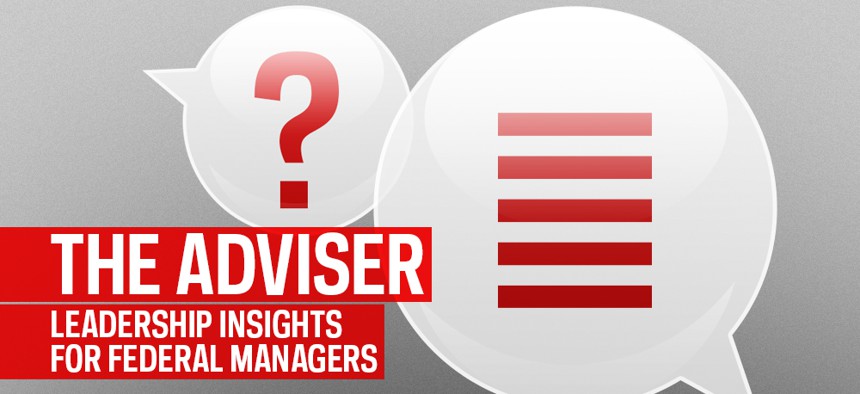
How to Lead Change When You’re a Middle Manager
Building new organizational capabilities can be difficult when you lack full authority.
Q: How can I lead change across my agency or across agencies when I don’t have the authority to do so? --Anonymous
Whether it is developing new information technology systems, designing new risk-based systems of regulation, or building new electronic Freedom of Information Act systems, leading change to build new organizational capabilities is a constant if not increasing demand in the federal government. The task of building these capabilities falls to those in the middle of the government, mid-level and senior executive leaders, who typically do not possess the full set of authorities needed to command construction and adoption of new capabilities. How can you lead change within your agency or across agencies and other organizations when you lack authority?
My new book, Leading Change from the Middle: A Practical Guide for Building Extraordinary Capabilities, (available at Brookings Institution Press, April 2014, and at Amazon.com) offers one approach for leading change without authority. The approach is based on three central ideas and is illustrated by two government case studies. Here are the three ideas to consider:
Who are my stakeholders? Identify and classify all relevant stakeholders into four categories: superordinates, subordinates, customers and complementors/blockers. As the names suggest:
· Superordinates represent all those in the direct line of authority above you in the organization—your boss, your boss’ boss, etc.—who will have an interest in the capability.
· Subordinates are those who work directly for you or who will be contracted to support you.
· Customers can be inside or outside of your organization and are those individuals who will benefit from the new capability.
· Complementors/blockers are individuals outside of your immediate chain of command from whom you will need support, but who also can stop your project in its tracks.
Tailor your approach. Stakeholders all require different approaches to communications, strategies, tactics and sequencing (referred to as CoSTS). Here are the CoSTS needed to engage each stakeholder group:
· Superordinates can be engaged by the set of CoSTS called “agree-in.” For you to succeed, you will need to converse with your superordinates to seek agreement in five key areas. Have an initial as well as ongoing conversations with your superordinates to explore the sources and nuances of the project’s timing and objectives, verify the stakeholder landscape to ensure you have not missed anyone, investigate superordinates' role and support so that you know how far you can push without losing support, figure out the best way to secure resources and develop an approach for ongoing communications.
· Subordinates require a different set of CoSTS. “Bee-in” asserts that you should never ask for “buy-in” from your subordinates. Asking for buy-in implicitly means that the person wasn’t important enough to be involved in decision making, yet you need them to grant you authority. Bee-in is different. It works by creating commitment within your team that leads to empowerment. To do so, you ask your subordinates to first formulate the challenge, verifying their formulation of the challenge with stakeholders. Then, the team develops an approach to tackle and resolve the challenge. The team again consults stakeholders to verify that they too believe the solution works. If the team formulates the challenge and develops the solution, not only will they own both the challenge and solution, they also will own the implementation. Bee-in provides detailed guidance to achieve this outcome.
· While not appropriate for subordinates, the label “buy-in” does offer four useful CoSTS for engaging customers. Ultimately, customers pay for the use or output of capabilities with their time and treasure. Even internal customers may have high payments of time in learning and using a new IT system. Buy-in’s first strategy is to invite customers into the bee-in process—engage customers with the team so that they co-create the capability. If doing so is not feasible, then either engage lead users and opinion leaders in the bee-in process or research what the customers value. No matter how you discover the customers’ value function, it is important to market and advertise to help shape perceptions of the capabilities’ value to customers.
· “Allow-in” represents the most crucial set of CoSTS because complementors/blockers often are the most challenging of stakeholders. Allow-in introduces five CoSTS that will keep complementors from becoming blockers, convert blockers to complementors and help you get around immovable blockers. The first approach is to invite them into the bee-in process. If they choose not to participate then a second approach is to engage them with buy-in through creating value for the complementor so that they will support your project. A third approach is to engage in a “gift-exchange”--doing something for them with the expectation that they will do something for you. These first three CoSTS provide different ways to create value for complementors. The final two approaches, which are to be avoided if at all possible, are to rely on coalition building and, ultimately, authority to twist blockers’ arms or to go around them altogether.
Keep stakeholders happy. The third and final idea focuses on keeping stakeholders from experiencing disrespect, envy, anger, and fear (DEAF). If the embers of these emotions are fanned then the flames of stakeholder emotion will make them DEAF to your change efforts. Becoming DEAF increases the likelihood that stakeholders will become blockers and actively resist or undermine your leadership.
These three ideas and the CoSTS they represent combine to form what I call “leading at the crossroads of change.” Building extraordinary capabilities is the desire of practically every attempt at innovation and leading change. Yet, few succeed, in part, because most approaches to leading change are designed either for the top or the bottom of the organization, not for the middle. I believe that these three ideas can help you increase your likelihood of successfully building extraordinary capabilities when leading change from the middle.
Duce a mente (May you lead by thinking)







